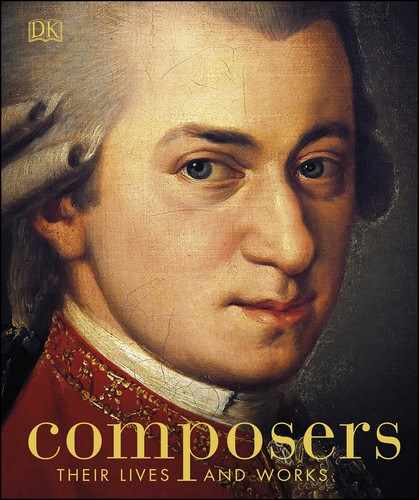Arvo Pärt
BORN 1935, ESTONIAN
Pärt, whose works are among the most performed of any living composer, achieved international recognition for haunting, contemplative music written using his distinctive “tintinnabuli” technique.

ARVO PÄRT, 2014
Pärt’s music, whether orchestral or choral, has been described as “holy minimalism” and seems to strike a chord with a contemporary audience seeking spiritual connection.
ON TECHNIQUE
Tintinnabuli
Since the mid-1970s, Pärt has used a compositional technique of his own invention, which he calls “tintinnabuli.” The method involves setting a simple, slow-moving melody with an equally simple accompaniment drawing on the most basic three-note chord, or triad. In the short piano solo Für Alina (1976), for example, the melody is a rising and falling major scale, accompanied by notes of the triad of that scale. The combination of notes at any moment creates a single sound that Pärt says is “simultaneously static and in flux.” Like the sound of a bell (tintinnabulation), the sounds are allowed to ring on, letting their sonorities gradually unfold.
When Arvo Pärt was born in 1935, Estonia was an independent nation state, but in 1940 it was occupied by the Soviet Red Army, and remained a part of the Soviet Union until it regained independence in 1991. Pärt was born in Paide, capital of the central Järva County; at three years old he moved with his mother to the northern town of Rakvere, where he had his first music lessons around 1942.
He showed talent, especially as a composer, and as a teenager wrote pieces in a Neo-Classical style heavily influenced by Shostakovich and Prokofiev. He had little access to anything but Soviet-approved music on which to model himself, but managed to get hold of some illicit scores and recordings, from which he learned about modern techniques such as 12-tone serialism.
Early works
Pärt continued his musical education at the Tallinn Music Middle School and from 1958 at the Tallinn Conservatory, at the same time working as a sound producer for Estonian public radio. While still a student, he wrote his first major orchestral work, Nekrolog, dedicated to victims of the Holocaust.
The first piece by an Estonian composer to use the 12-tone serial technique, it was denounced by the Soviet authorities. Undeterred, Pärt continued exploring avant-garde styles throughout the 1960s, and developed a sort of musical collage technique, incorporating a variety of Modernist ideas. However, he felt that he had still to find his own musical language. The turning point came in 1972. That year saw two major changes in his personal life: he got married, and he converted from Lutheranism to the Orthodox Church. This prompted him to take a break from composing, and to study medieval and Renaissance music, and more importantly the choral music of the Orthodox liturgy.
Pärt’s studies elicited a radical change in his musical approach. He abandoned the complexity and intellectualism of his previous music to create an austere and almost static sound-world. Although the simplicity of this style bore some similarities to the American minimalist composers, in his idiosyncratic technique, which he called “tintinnabuli,” he had found his unique personal voice (see box). After early works in this style, including perhaps his best-known composition, Spiegel im Spiegel (1978), he has written mainly sacred works inspired by his Orthodox Christian faith, or with a spiritual theme.

MUSICAL BEGINNINGS
A piano belonging to the Pärt family, now at the Arvo Pärt Center in Laulasmaa. The composer’s mother liked to start the day by playing music by Bach.
Exile and return
Pärt remained a thorn in the side of the Soviet musical establishment, and by 1980 was so pilloried by his critics that he was forced to leave Estonia with his wife and two sons. They lived at first in Vienna, moving in 1981 to West Berlin, where he was granted German citizenship. With the fall of the Soviet bloc, he renewed his contacts with his homeland, and for a while divided his time between Germany and Estonia, before moving back permanently to the coastal village of Laulasmaa, near Tallinn, in 2010.

ORTHODOX CATHEDRAL, TALLINN
The Alexander Nevsky Cathedral is an Orthodox church in Tallinn Old Town. After Pärt’s conversion to Orthodox Christianity his music underwent a major change in style, often being based on sacred texts.
“ It is enough when a single note is beautifully played. ”
ARVO PÄRT
